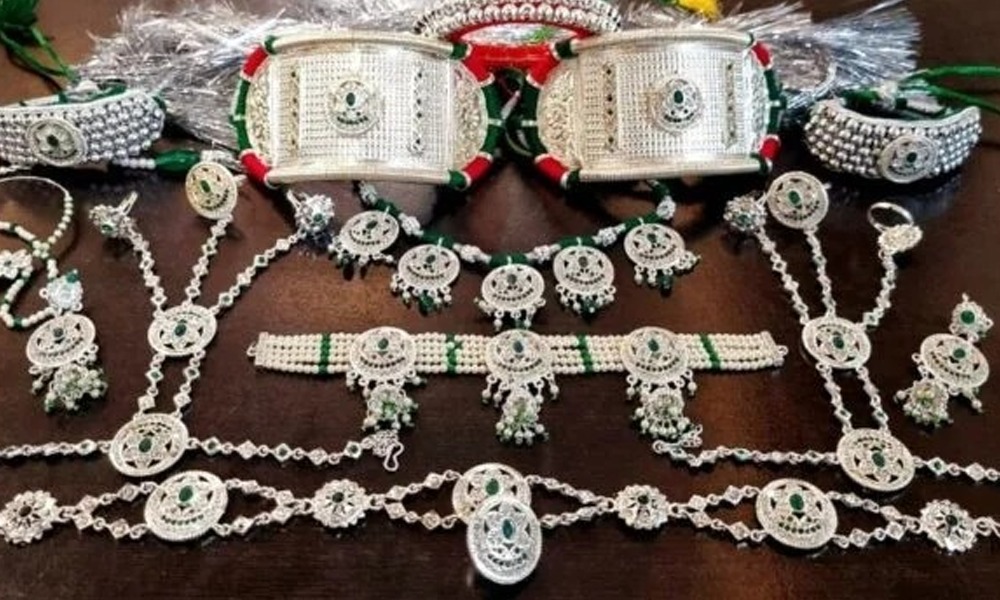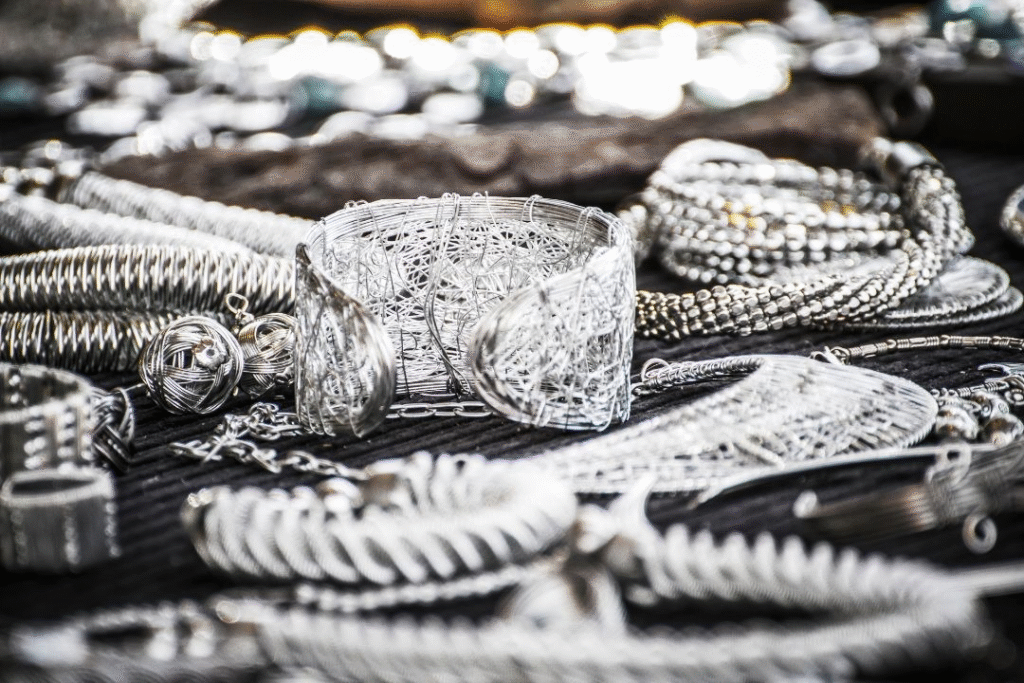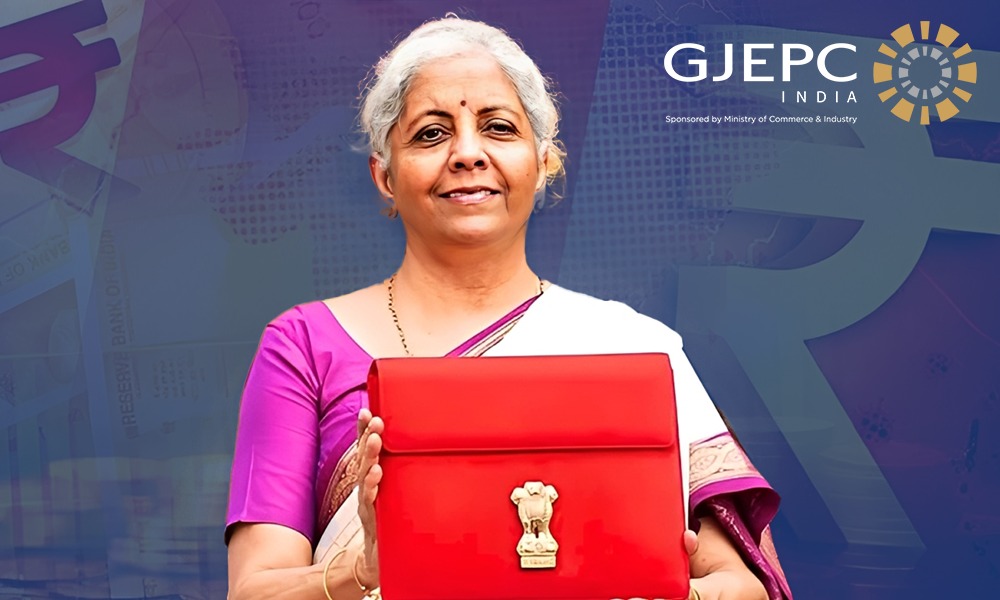National News
IBJA Urges BIS to Allow Jewellers to Self-Hallmark Silver Products Amid Rising Demand
Association cites high logistic costs and increasing consumer interest in silver jewellery; seeks reform in hallmarking rules to prevent fraud and make compliance feasible.

The India Bullion and Jewellers Association (IBJA) has urged the Bureau of Indian Standards (BIS) to permit mandatory self-hallmarking of silver products by jewellers, instead of relying solely on hallmarking centres. The association warned that current logistics and operational costs linked to hallmarking silver items could burden jewellers and eventually consumers.

In a letter dated July 18, IBJA’s national secretary Surendra Mehta highlighted the impracticality of transporting bulky silver artefacts like utensils, furniture, and idols to hallmarking centres, which could significantly raise operational costs. Smaller silver items such as jewellery and silverware, though lightweight and typically priced under Rs.3,000 could also become costlier due to hallmarking overheads.

“To carry out hallmarking of these small items may be expensive affair for jeweller and consumer as well. Further hallmarking agency may not be able to handle so much volume of small silver items/jewellery,” Surendra Mehta wrote.
India currently has 1,622 hallmarking and assaying centres, but IBJA emphasized that these may be insufficient to handle the growing volume of silver products. The letter proposed a self-hallmarking system wherein jewellers assign a unique code to each silver item and include it in invoices, ensuring traceability and transparency.
IBJA also called for a review of the existing rules and penalties related to gold hallmarking, suggesting amendments that could apply similarly to silver.
With silver prices now retailing at Rs.14,252 per kg and rising consumer interest in silver jewellery over gold, concerns around authenticity and quality have increased.
“We have found that more and more consumers are now opting for silver jewellery and bypassing gold jewellery purchase. However, silver jewellery and artefacts hallmarking are not mandatory in nature and these leaves ample room for consumers to be cheated by jewellers,” the IBJA letter noted.
Chirag Sheth, principal consultant (South Asia) at Metals Focus, a London-based precious metals consultancy, echoed these concerns.
“Payal that women wear on their feet is the most sold silver jewellery product in India. They control 50% of the silver jewellery market that stood at 2,700 tonnes in 2024. It is well known in the industry circles that many a time jewellers use silver alloys in this product, which customers are unable to find out. So hallmarking is definitely required for silver items. Also, the demand for silver jewellery is increasing among the young crowd because of the affordability of the product and they are asking for hallmarking.”

Silver jewellery consumption in India has surged from 900 tonnes in 2010 to 2,700 tonnes in 2024, with the country heavily reliant on imports to meet this growing demand.
National News
GJEPC Presents Pre-Budget Recommendations to Boost Exports and Ease of Doing Business

The Gem & Jewellery Export Promotion Council (GJEPC) submitted its set of pre-budget proposals to the Government of India in New Delhi on 7th November, aimed at enhancing the ease of doing business and driving export growth.
The delegation, led by Kirit Bhansali, Chairman, GJEPC, along with Anoop Mehta, Convener, Diamond Panel; K. Srinivasan, Convener, Gold Panel; and Sabyasachi Ray, Executive Director, GJEPC, presented key recommendations addressing critical industry needs.
Among the major proposals were a liberalised taxation framework for rough diamond trading in Special Notified Zones—aligned with international hubs such as Israel, Dubai, and Belgium—and an extension of customs duty exemption on lab-grown diamond seeds beyond March 2026, to support India’s rapidly expanding LGD sector.
GJEPC also sought retrospective applicability of the ±0.01 mm height variance rule (2014–2025) for re-imported diamonds sent for certification and grading, ad-valorem duty drawbacks for gold and silver, and the inclusion of platinum jewellery and gold articles in the drawback scheme.
To attract foreign tourists, the Council recommended a comprehensive tax refund mechanism covering GST, Basic Customs Duty, and Agriculture Infrastructure and Development Cess (AIDC), supported by digital integration and refund counters at airports.
Further proposals included greater flexibility for SEZs—allowing reverse job work, domestic sales on duty payment, and “Bill to, Ship to” procurement—to streamline logistics.
GJEPC also urged the reduction of import duty on cut and polished diamonds and coloured gemstones from 5% to 2.5%, abolition of duty on rough gemstones, and enhancement of personal carriage limits for overseas exhibitions and business tours.
Highlighting industry challenges, the Council appealed for relief from transfer pricing penalties under Section 271(6), citing the industry’s thin profit margins and established judicial precedents supporting its compliance approach.
-

 GlamBuzz1 week ago
GlamBuzz1 week agoKushals Fashion and Silver Jewellery shines bright with Sanya Malhotra as its Brand Ambassador in the North and Priyanka Mohan in the South
-

 GlamBuzz21 hours ago
GlamBuzz21 hours agoTamannaah, Samantha, and Janhvi Kapoor Dazzle in Stunning Jewellery and Couture Moments
-

 National News19 hours ago
National News19 hours agoANOR Redefines Luxury: Pioneering Premium Lab-Grown Diamond Jewellery for India’s Elite
-

 BrandBuzz3 days ago
BrandBuzz3 days agoWhen your Love Speaks its own Language, Seal it with Platinum Love Bands











